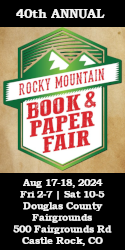Making Lemonade
Not so long ago I crawled out on a limb and suggested “the threat of an ‘ugly deflation’ that worries some economists wouldn’t be a bad thing if prices on goods and services declined more or less uniformly...” It’s not the deflation by itself that’s ugly—its uneven nature tends to bother mainstream economists because it rewards savers and punishes consumers and businesses who have have borrowed more than they should (probably a good thing), while monopolies continue doing whatever they like.
The reverse would be an “ugly inflation” that punishes savers and rewards irresponsible consumers and governments who, in order to support extravagant spending habits, take on too much debt that they hope to pay off with constantly inflated currency. (Zimbabwe has recently printed a 50 billion dollar bank note and last week it was only enough to buy two or three loaves of bread—about a year or so ago the same bread would have cost 100,000 ZWD, but there’s been some inflation since).
The present state of the overall economy and the antiquarian book trade in particular has reinforced this view. In some areas slackening demand has brought about a general decline in prices (housing, gasoline, cars, clothing and other imported goods) while other sectors, taking advantage of captive markets, tend to increase prices at will, without taking into account what people can afford to pay. College tuitions have risen to the point that nowadays it’s mainly the wealthy or the poor who are able to attend what used to be thought of as the more prestigious private colleges and universities, and while the growing trend is for the “best and brightest” to opt for state universities, even these institutions are in danger of becoming less affordable.
Hospital and medical costs, including malpractice insurance, are so out of control that some sort of universal “single payer” or socialized medical system may be a lot closer than we might think and another round of patchwork reforms would only add administrative layers and higher insurance costs (think AIG) without offering truly universal health care in the sense that our public schools offer universal or “socialized” education. Take away the parabolic increases in health care costs in recent years and I don’t think this issue would be so high on the national agenda.
In a small way, the cable financial news programs have contributed their bit to our economic problems and on the “Daily Show” a few weeks ago, Jon Stewart demolished Jim Cramer for, among other things, urging his audience to buy Bear Stearns shares not long before that company collapsed. My criticism of the cable financial news shows is that some of the presenters, in recent years, have tended to behave less like responsible reporters and more like interested salesmen touting derivatives and other “investments” of questionable value.
Yet prolonged economic downturns or times of severe rationing can sometimes have unintended consequences of a positive nature. It’s now generally known that during the Depression, when fewer people could afford to eat high on the food chain, and during World War II (especially in Europe), when meat, dairy products and other rich foods were in very short supply, cardio-vascular disease almost disappeared. After the war, with the return of prosperity and the resumption of old eating habits, heart-related diseases returned to former levels. And as it is with the body it might also be with the mind.
Apart from obvious dissimilarities, books and television do have some things in common. Both have the potential to inform, educate and entertain—the latter, I believe, in a more controlling, manipulative, and sometimes mind-numbing manner. I am out of touch with the television ratings, but have been told that besides sports programming, two of the more popular shows continue to be “American Idol” and “Dancing with the Stars” and by most reports wide flat screen television sets are now as common as home libraries are rare.
In today’s economic climate people may not have the extra money (or the wish) to buy the latest electronic plaything that is designed to be passé and ready for the dust bin or trash heap in months rather than years, but for considerably less they can gradually build a library or collection of books that retains its usefulness from one generation to the next. In other words, during times of economic depression serious readers can take advantage of declining prices and have an intellectual feast. (Non-readers wouldn’t know, wouldn’t care, or wouldn’t care to know)
In researching some of my own catalogues from the late 1960s I noticed some interesting trends in book prices and shipping costs. Truly scarce and unusual books have increased in value as you might expect. In a music catalogue from June of 1969 I listed and sold a first edition of Charles Burney’s “The Present State of Music in Germany...” (London, 1773) in two volumes for $115.00—a copy of the second edition is presently listed on Biblio.com for $574.56 (I believe the postage at the time was 9¢ for the first pound and 5¢ for each additional, plus insurance). From the same catalogue I sold a very good copy of the second edition (more useful than the first) of Burney’s “The Present State of Music in France and Italy...” (London, 1773) for only $65.00. A worn copy of the first edition is presently listed on Biblio.com for $400.00 and a copy of the preferred second edition (rebound in period-style half calf) is available for £550.00 (about $775.00 at today’s exchange rate). Shipping charges at the time were negligible and were often absorbed by the seller.
It’s a totally different story with good second-hand or out-of-print books of personal or academic interest. In a “Philosophy & Religion” list from 1969 I sold a nice copy of Alexander’s “Space, Time and Deity” [The Gifford lectures at Glasgow, 1916-18, (London, 1920)] in two volumes for $20.00. It ‘s currently on Biblio for just $21.20. Assuming a weight of about five pounds, the shipping cost (exclusive of insurance) would have been 29¢ then, $3.63 now. Not a big deal for the present-day rare book market, a very big deal for people buying and selling good used books on line.
Other examples include William Addison’s “Worthy Doctor Fuller” (London, 1951), $10.00 in 1969 (plus 19¢ shipping), $1.00 now (plus $2.93 shipping); Margaret Anderson’s “My Thirty Years War...” (New York, 1930), $8.50 in 1969, $9.14 now; Hallet Abend’s “My Life in China” (New York, 1943), $6.00 in 1969, $7.50 now—plus shipping in all cases. And keep in mind that books listed on the book sites represent unsold copies, not realized prices.
Along with uncontrolled hyperinflation in the case of the postal service (taking advantage of a captive but shrinking customer base) there’s a significant deflation in the important part of the antiquarian book trade that offers good used or out-of-print books to the general reading public. The conventional notion that leisure time spent surfing a hundred or more cable television channels is time that cannot be spent reading a good book is being challenged by the present book club phenomenon (it seems every town of any size has at least one) and not all of them read current “best sellers” or recently published titles—two in our own village of Cazenovia often select older books which are readily available at modest cost in the secondhand book branch of the antiquarian book trade.
Newspapers, radio and television have been running a lot of stories lately about the reduced spending habits of born-again frugalistas who less than a year ago might have thought nothing of spending $5.00 or more for a cup of coffee, and whether the change comes as the result of economic necessity or the dictates of fashion really doesn’t matter—stopped clocks and fashionistas do occasionally get it right.
2009 promises to be the summer of the serious backyard vegetable garden—even the White House has one (let them eat arugula...). Vegetable seed sales have soared and one late night radio advertiser has lately touted non-hybrid vegetable seeds as an “investment” rivaling gold (There’s some seriously weird stuff on late night radio). The point is that if you’re lucky enough to enjoy gardening (I figure the cost of my time the way others calculate the cost of time spent playing golf, boating, or fishing), you can produce nearly half of your food needs for an entire year (unless you’re a big time carnivore) for a few dollars in seed costs. Backyard gardening was big in the 1930s, during World War II, for a short time in the 1970s, and this time around it’s nice to imagine that it will be more than a passing fancy.
Carrying on with the theme of encouraging a more frugal and less wasteful way of life, I think 2009 might also be the year when readers rediscover antiquarian or secondhand bookstores. While the prices of newly published books continue to rise, books on the secondary market (general secondhand bookstores and charity book sales) offer thrifty book buyers values and opportunities not unlike those of the Great Depression, and if books offered on Biblio and the other on line sites seem attractively priced at present, it’s much the same with many large antiquarian shops and book barns that have lately been offering good clothbound, secondhand books (by the best writers, past and present) for less than what new mass market paperbacks generally cost.
So if you’re a serious reader with modest resources and if there’s no secondhand bookstore near where you live, take advantage of our Open Shop Guide or Book Fair Calendar while planning your summer vacation, and if you intend to stay home you can always make a virtual road trip to “Booksellers’ Gulch” on this magazine’s website.

























